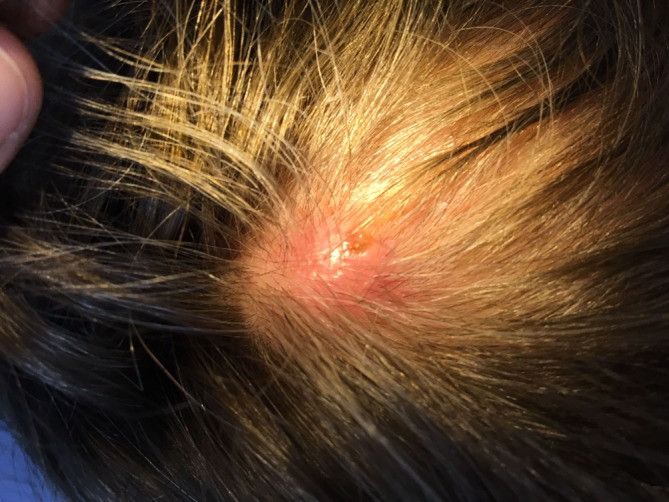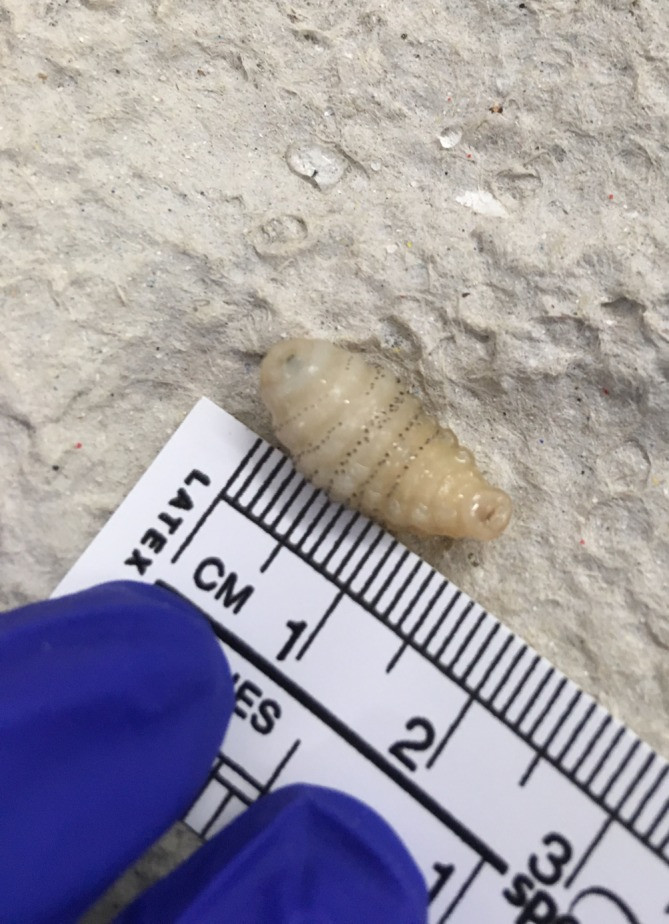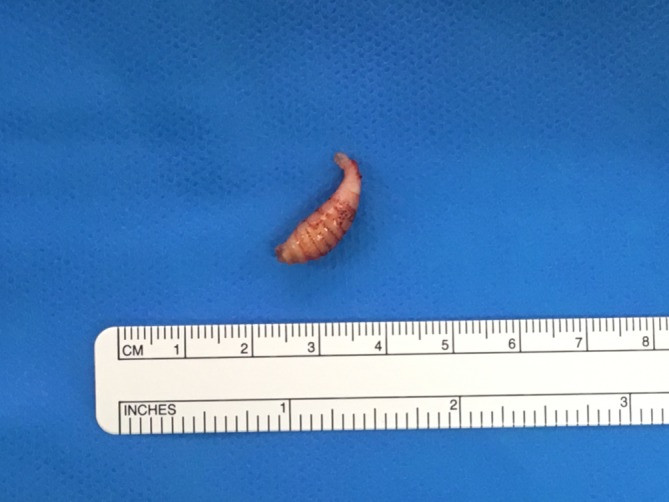Bot flies in your skin can be unsettling, but understanding the risks and prevention methods is crucial. At flyermedia.net, we provide comprehensive information to help you protect yourself. This article explores how bot flies infest skin, symptoms, treatment options, and preventive measures, especially for those in the aviation industry and frequent travelers.
Table of Contents
- What Are Bot Flies and How Do They Infest?
- Geographic Distribution of Bot Flies
- How Bot Flies Target Humans
- Symptoms of Bot Fly Infestation
- Diagnosing Bot Fly Infestation
- Treatment Options for Bot Fly Infestation
- Preventing Bot Fly Infestation
- Risks for Aviation Professionals and Travelers
- Case Studies of Bot Fly Infestation
- Expert Opinions on Bot Fly Infestation
- Frequently Asked Questions (FAQs) About Bot Flies
1. What Are Bot Flies and How Do They Infest?
Bot flies, also known as warble flies, are a family of flies (Oestridae) whose larvae are internal parasites of mammals. Understanding how Dermatobia hominis, the human bot fly, infests skin is essential for prevention. These flies don’t directly lay eggs on humans; instead, they employ a clever strategy known as phoresy. The female bot fly captures a mosquito or another blood-sucking insect and attaches its eggs to it. When the carrier insect lands on a human for a blood meal, the warmth of the skin triggers the bot fly eggs to hatch, and the larvae burrow into the skin. They then develop in the subcutaneous tissue, feeding on the host’s flesh.
2. Geographic Distribution of Bot Flies
Where are bot flies commonly found? Human bot flies are primarily found in the tropical regions of Central and South America. Countries such as Brazil, Argentina, Mexico, and Costa Rica have reported cases of bot fly infestations. Travelers to these regions, including aviation professionals, need to be particularly vigilant. Knowing the geographic distribution helps in taking necessary precautions to avoid exposure.
3. How Bot Flies Target Humans
How do bot flies specifically target humans? Bot flies have a unique method of targeting humans, which involves using other insects as carriers. The process unfolds as follows:
- Egg Deposition: The female bot fly captures a mosquito, tick, or another fly and attaches its eggs to it.
- Carrier Insect: The carrier insect acts as a vehicle for the bot fly eggs.
- Host Detection: When the carrier insect lands on a human or animal to feed, the warmth activates the eggs.
- Larval Hatching: The larvae hatch and drop onto the skin.
- Skin Penetration: The larvae then burrow into the skin through the bite wound or a hair follicle.
 Photo of the patient’s scalp prior to surgery. The larva’s breathing hole is visible.
Photo of the patient’s scalp prior to surgery. The larva’s breathing hole is visible.
4. Symptoms of Bot Fly Infestation
What are the symptoms of a bot fly infestation? The symptoms of bot fly infestation can vary, but common signs include:
- Painful, boil-like lesion: A raised, red bump that resembles a boil.
- Itching: Intense itching around the site of the lesion.
- Movement sensation: A feeling of movement under the skin.
- Discharge: Clear, odorless fluid draining from the lesion.
- Breathing hole: A small hole in the center of the lesion through which the larva breathes.
If you experience these symptoms, especially after traveling to Central or South America, seek medical attention promptly.
5. Diagnosing Bot Fly Infestation
How is a bot fly infestation diagnosed? Diagnosing bot fly infestation typically involves a physical examination by a healthcare professional. Key diagnostic indicators include:
- Visual Inspection: Observing the characteristic lesion with a central breathing hole.
- Patient History: Recent travel to areas known for bot flies.
- Symptoms: Reporting symptoms such as pain, itching, and movement sensation.
- Dermoscopy: Using a dermoscope to visualize the larva inside the lesion.
In some cases, ultrasound imaging may be used to confirm the presence and location of the larva.
6. Treatment Options for Bot Fly Infestation
What are the effective treatment options for bot fly infestation? Several methods can be used to remove bot fly larvae from the skin:
- Surgical Removal: A healthcare professional can surgically remove the larva. This method is effective and ensures complete removal.
- Suffocation Method: Applying a thick substance like Vaseline or wax over the breathing hole to suffocate the larva, forcing it to emerge.
- Extraction with Forceps: After suffocation, the larva can be carefully extracted using forceps.
It is crucial to seek professional medical advice and avoid squeezing the larva, as this can cause it to rupture and lead to a secondary infection.
 The first botfly larva, extracted on the ward after application of Vaseline, measuring 1.5×0.5 cm.
The first botfly larva, extracted on the ward after application of Vaseline, measuring 1.5×0.5 cm.
7. Preventing Bot Fly Infestation
How can bot fly infestation be prevented? Preventing bot fly infestation involves several strategies, especially when traveling to endemic areas:
- Use Insect Repellents: Apply insect repellents containing DEET or picaridin to exposed skin.
- Wear Protective Clothing: Wear long sleeves, long pants, and hats to minimize skin exposure.
- Use Bed Nets: Sleep under bed nets, especially in rural areas.
- Avoid Mosquito Bites: Take measures to avoid mosquito bites, as mosquitoes are common carriers of bot fly eggs.
- Inspect Skin Regularly: Check your skin regularly for any unusual lesions or bites.
8. Risks for Aviation Professionals and Travelers
Why are aviation professionals and frequent travelers at higher risk? Aviation professionals and frequent travelers are at a higher risk of bot fly infestation due to their increased exposure to different geographic regions. Pilots, flight attendants, and other aviation staff often travel to tropical and subtropical areas where bot flies are prevalent. This frequent travel increases their chances of encountering bot flies and their carrier insects.
Specific Risks:
- Frequent Travel: Regular travel to endemic areas.
- Outdoor Exposure: Spending time outdoors in affected regions.
- Lack of Awareness: Insufficient knowledge about bot fly risks and prevention.
Preventive Measures for Aviation Professionals:
- Education: Providing comprehensive information about bot flies and preventive measures.
- Insect Repellents: Encouraging the use of insect repellents.
- Protective Clothing: Recommending the use of protective clothing in high-risk areas.
- Regular Skin Checks: Promoting regular self-examinations for unusual lesions.
9. Case Studies of Bot Fly Infestation
What are some notable case studies of bot fly infestation? Examining case studies can provide a clearer understanding of bot fly infestations and their management.
Case Study 1: Traveler Returns from Argentina
A woman in her 50s returned to the UK after a trip to Argentina and developed itchy lesions on her scalp. Initially misdiagnosed as cysts, the lesions grew, causing pain and discharge. Eventually, bot fly larvae were identified and removed, highlighting the importance of considering myiasis in travelers returning from endemic areas.
Case Study 2: Misdiagnosis Leading to Delayed Treatment
Another case involved a patient who was initially treated for an ear infection and cysts. The delay in diagnosis led to increased discomfort and the need for surgical intervention. This case underscores the need for healthcare professionals to consider bot fly infestation in patients with relevant travel history and symptoms.
Case Study 3: Successful Removal Using Vaseline
In one instance, a bot fly larva was successfully removed by applying Vaseline to occlude the breathing hole, forcing the larva to emerge. This method demonstrates a simple yet effective approach to managing bot fly infestations.
 The second botfly larva, removed following surgical excision, with breathing tube intact.
The second botfly larva, removed following surgical excision, with breathing tube intact.
10. Expert Opinions on Bot Fly Infestation
What do experts say about bot fly infestations? Experts emphasize the importance of awareness and prompt treatment. According to a study from Embry-Riddle Aeronautical University, aviation professionals should receive specific training on recognizing and preventing bot fly infestations. Dermatologists recommend that any unusual skin lesion, especially after travel to endemic regions, should be evaluated for potential myiasis. Early diagnosis and appropriate treatment can prevent complications and ensure a quicker recovery.
11. Frequently Asked Questions (FAQs) About Bot Flies
Here are some frequently asked questions about bot flies to enhance your understanding:
- What is myiasis?
Myiasis is the infestation of the body with fly larvae. - How do bot flies differ from other flies?
Bot flies deposit their eggs on mosquitoes or other insects, which then transfer the larvae to humans. - Can bot fly infestations be prevented?
Yes, by using insect repellents, wearing protective clothing, and avoiding mosquito bites. - What should I do if I suspect a bot fly infestation?
Seek medical attention immediately for proper diagnosis and treatment. - Is it safe to remove bot fly larvae at home?
It is best to seek professional medical assistance to avoid complications. - How long does it take for bot fly larvae to mature in the skin?
Larvae can remain in the skin for 4 to 18 weeks. - Are bot fly infestations common in the United States?
Bot fly infestations are rare in the US but can occur in travelers returning from endemic areas. - What are the potential complications of bot fly infestation?
Complications can include secondary bacterial infections and foreign body reactions. - Do bot flies only affect humans?
No, bot flies can also infest other mammals. - Where can I find more information about bot flies and their prevention?
Visit flyermedia.net for comprehensive information and resources on bot flies and other aviation-related health concerns. You can also contact us at Address: 600 S Clyde Morris Blvd, Daytona Beach, FL 32114, United States or Phone: +1 (386) 226-6000.
At flyermedia.net, we are committed to providing accurate and up-to-date information on aviation-related health and safety issues. Stay informed, stay safe, and explore the world with confidence. Discover more about aviation training, news, and career opportunities by visiting our website today.

